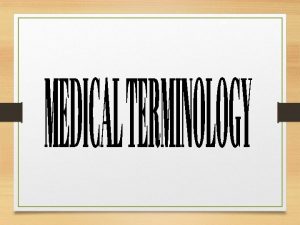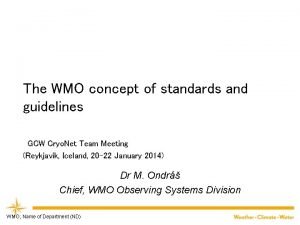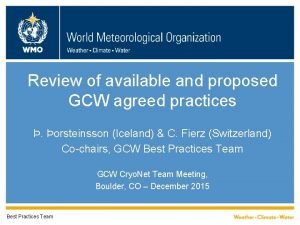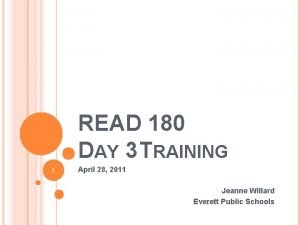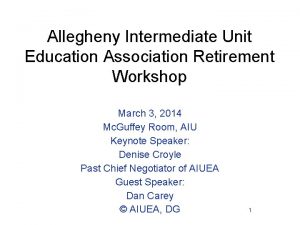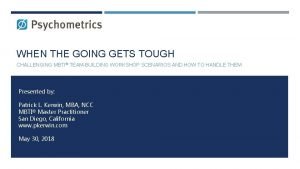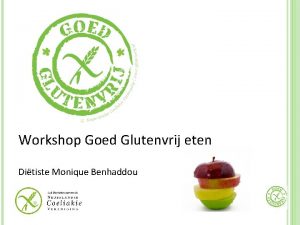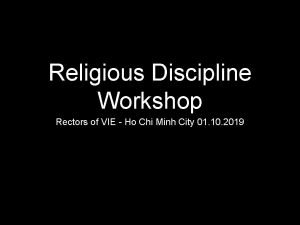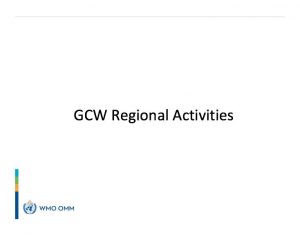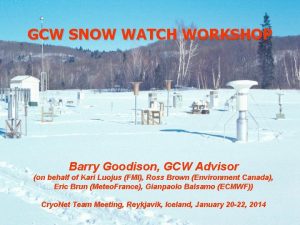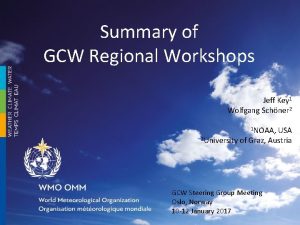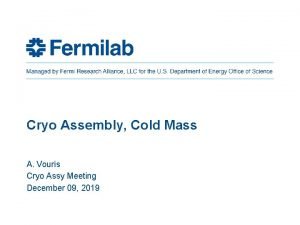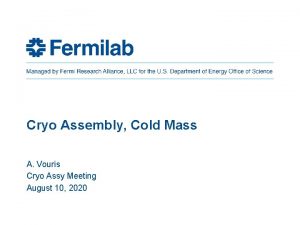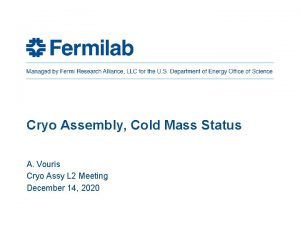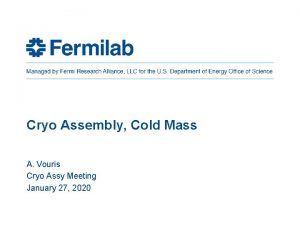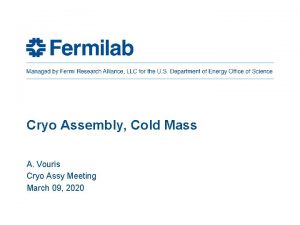GCW Regional Workshops South America Cryo Net Workshop











- Slides: 11


GCW Regional Workshops South America Cryo. Net Workshop Santiago, Chile, October 2014 1. Ø Engaged the South American cryosphere community First Asia Cryo. Net Workshop – Beijing, December 2013 2. South America Cryo. Net Workshop - Santiago, Chile, October 2014 3. Second Asia Cryo. Net Workshop Salekhard, Russia, February 2016 4. GCW Tropical Cryosphere Workshop - Arusha, Tanzania, July 2017 Ø Extended GCW Observing Network in South America (see next slides) Ø Established a regional GCW Cryo. Net group

2017 Approved GCW Stations, South America Station/Site Operating Country Location Type 1 Antisana 15 Ecuador alfa Ecuador Cryo. Net Station 2 Traub Glacier (Quito) Ecuador Antarctica Contributing Station 3 Zongo Glacier France and Bolivia Cryo. Net Station 4 Morenas Argentina Coloradas Rockglacier Argentina Contributing Station 5 Quelccaya Ice Cap USA Peru Cryo. Net Station 6 Vuriloches Argentina Contributing Station 7 Valle Nevado Chile Cryo. Net Station 8 Mocho. Choshuenc o Volcano Chile Contributing Station

GCW Observing Network South America: candidate stations Station/Site Operating Country Location Type 1 Yanamarey Peru Cryo. Net Site 2 Gueshgue Peru Cryo. Net Site 3 Artesonraju Peru Cryo. Net Site 4 Glaciar Norte Mexico Cryo. Net Site 5 Glaciar Conejeras Colombia Cryo. Net Site 6 Aonikenk Argentina Cryo. Net Site 7 Hydrology Division and Glaciology and Snow Department(General Water Directorate (DGA) Chile Cryo. Net Site 8 Snow Routes, Hydrology Division, (General Water Directorate (DGA) Chile Cryo. Net Site 9 Ritacuba Blanco glacier Colombia Cryo. Net Site Assessment to be finalized, pending clarification from their respective proponents, on whether these are in fact “Stations” and not “sites” (see slide 5)


Glaciar La Paloma Glaciares de los Andes del Sur: estado actual y proyecciones futuras Gino Casassa Geoestudios, Las Vertientes y Universidad de Magallanes, Punta Arenas Lucas Ruiz IANIGLA, CONICET, Mendoza Synthesis Meeting: The Impact of Glacier Retreat in the Andes: International Multidisciplinary Network for Adaptation Strategies 22 -25 August, Mendoza, Argentina

SOUTHERN ANDES Randolph Glacier Inventory v 5 2015 29, 333 km 2 16, 046 glaciers Argentina IANIGLA Inventory Sep. 2016 http: //glacierhub. org 5, 557 km 2 14, 648 glaciers 60 of 70 basins 20% S Andes Chile DGA Inventory Feb. 2014 23, 641 km 2 24, 114 glaciers 80% S Andes TOTAL ARGENTINA + CHILE INVENTORIES 29, 198 km 2 38, 762 glaciers

Future evolution of the Yerba Loca glaciers (shown in black): 2016 -2040.

Jansson et al. , 2003 Melt of the “deglaciation discharge dividend” (Collins, 2008) until a maximum peak level is attained, subsequently decreasing when the glacier is not able to sustain such large melt water production due to is reduced size, until finally the discharge drops to the base flow level when glacier extinction is reached.

Hypothetical shift from a glacio-nival regime to a more nivo-pluvial regime at Maipo River at El Manzano station (850 m asl), central Chile, as a response to a future warming scenario under constant annual precipitation, which is consistent with model predictions (e. g. Serrano, 2014).

LATIN AMERICA STRENGTHS/WEAKNESSES • STRONG Group on Glacier Mass Balance, sponsored by UNESCO IHP, already data providers to CRYONET • WEAK representation of SNOW + PERMAFROST research: good opportunity for GCW involvement together with IHP (SNOW) & IPA (Permafrost)


